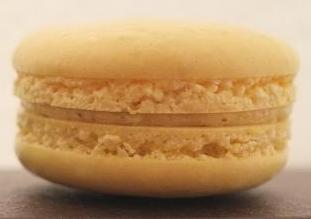In the past week we have been watching a Taiwanese TV drama
about a dessert shop. Watching all those delicious treats we decided to make
some in the weekend. As fuyu persimmon is in season now we happen to have 2 at
home. So fuyu dessert it is.
Talking
about fuyu treats this is what we brought back from Nara, Japan.
It’s made with dried fuyu and it’s served frozen. You can tell there’s no added sugar and it’s all natural dried fruit flavour.
Back to our fuyu custard cake. It’s a simple combination of
sugar crust, custard, and poached yufu. This recipe yields 12 3.5” cakes.
Sugar crust
All purpose flour – 290g
Cake flour – 20g
Sugar – 80g
Unsalted butter – 100g
Eggs – 2 large eggs
Pinch of salt
Poached fuyu
Fuyu – 2 fuyu, thinly sliced (you need 12)
Water – 2 cups
Sugar – 1.5 cups
Cinnamon
Maple syrup Fuyu custard
Plain Greek yogurt – 500g
Corn starch – 2 tablespoon
Maple syrup – 100g
Eggs – 6 eggs
Make sugar crust first
Beat butter, sugar and salt in a mixer at medium
speed until pale
Sift
the flour
Add
the egg and flour into the mixer until the ingredients mixed into a dough
On a surface dusted with flour, roll the dough
to a disc. Slowly add in 1 tablespoon of ice water and fold the dough into a
ball. Wrap with plastic wrap and rest the dough in the fridge.
Then make the poached fuyu
Put water and sugar in a saucepan and heat at
high heat. Bring the solution to boil and add the cinnamon
Meanwhile cut the 2 fuyu into thin slices.
Select 12 good slices and chop the leftover for the custard.
Add the sliced fuyu and reduce to low heat. Make
sure the slices fully covered by the solution
Simmer for 20 minutes. Set aside.
For the custard, simply combine all ingredients together.
Preheat oven to 350F. When the dough finished resting, roll it on a
surface dusted with flour to about 1 cm thick. Cut into 3.5” diameters circles.
Put the crust at the bottom of the baking rings, pour the custard into
the baking rings. Bake for 15 minutes. Then remove from oven, put the fuyu
slices on to the custard. Put it back into the oven and bake for another 15
min.
The cakes can be stored in an air-tight container at room temperature for
up to 3 days.







.jpg)


























